I have not seen this posted.
Navigation
Install the app
How to install the app on iOS
Follow along with the video below to see how to install our site as a web app on your home screen.
Note: This feature may not be available in some browsers.
More options
Style variation
-
Congratulations MintJulep on being selected by the Eng-Tips community for having the most helpful posts in the forums last week. Way to Go!
You are using an out of date browser. It may not display this or other websites correctly.
You should upgrade or use an alternative browser.
You should upgrade or use an alternative browser.
Norway bridge collapse 17
- Thread starter dylansdad
- Start date
- Status
- Not open for further replies.
gusmurr (Structural)16 Aug 22 08:0 said:I don't follow the reasoning that the existing pier couldn't be re-used.
There is no problem using the pier if it's incorporated into the design properly. In this case, it's an obvious design flaw. The truss web design is the defect, not necessarily the pier.
The old masonry pier is the only thing that DIDN'T fail. Well, the abutments are looking pretty good, too.
Note, by the way, that the ENTIRE bridge failed. There were three spans, and ALL failed.
And speaking of wood bridges, here is a photo taken in 2019 of a railroad bridge. The far (wooden) span is the newest one, built in 1936:
spsalso
Note, by the way, that the ENTIRE bridge failed. There were three spans, and ALL failed.
And speaking of wood bridges, here is a photo taken in 2019 of a railroad bridge. The far (wooden) span is the newest one, built in 1936:
spsalso
Here's a couple of glulam bridges built about 55 years ago, apparently still standing:
Apparently, glulam is Green. And Green is Good. The above bridges were built when glulam was just interesting and exciting.
More to the point, though, is bridges should not fall down. Whatever they are made from.
And this one did. The whole damn thing. Except for the masonry pier.
spsalso
Apparently, glulam is Green. And Green is Good. The above bridges were built when glulam was just interesting and exciting.
More to the point, though, is bridges should not fall down. Whatever they are made from.
And this one did. The whole damn thing. Except for the masonry pier.
spsalso
From the report linked by SteveHooker (Automotive)
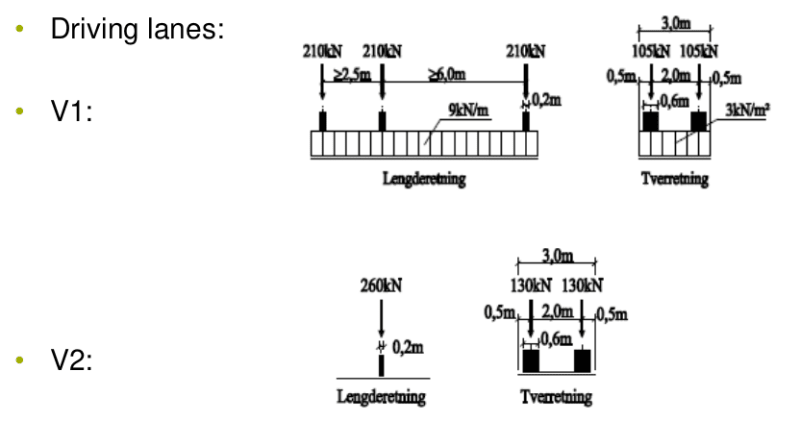
Looks like 47000 lb axle design load with spacing similar to HS-20, the physical size of the truck looks much smaller than is typical for gravel haulers in my part of the US, so I would be surprised if the loading exceeded the design case. Note: I have no knowledge regarding Norwegian highway standards, so this opinion may be full of hot air.
I am of the opinion that this bridge is a single continuous span with 4 supports, this sort of bridge truss is difficult to analyze, and the member loading can be overly sensitive to the intermediate support load transfer and shimming. Engineering toolbox Continuous Beams - Moment and Reaction Support Forces

Looks like 47000 lb axle design load with spacing similar to HS-20, the physical size of the truck looks much smaller than is typical for gravel haulers in my part of the US, so I would be surprised if the loading exceeded the design case. Note: I have no knowledge regarding Norwegian highway standards, so this opinion may be full of hot air.
I am of the opinion that this bridge is a single continuous span with 4 supports, this sort of bridge truss is difficult to analyze, and the member loading can be overly sensitive to the intermediate support load transfer and shimming. Engineering toolbox Continuous Beams - Moment and Reaction Support Forces
-
2
- #29
JohnRBaker
Mechanical
Here's a nice wooden arch bridge near Eagle River in Michigan's Upper Peninsula:
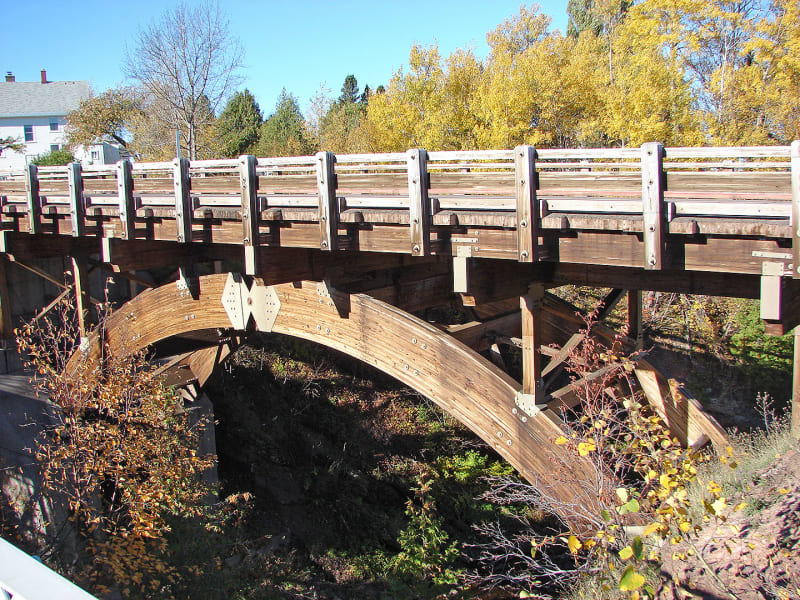
October 2010 (Sony DSC-H2)
This bridge was built in 1988 and it replaced an existing steel truss bridge which was constructed in 1915. Note that the old bridge was left in place and repurposed as a pedestrian and bicycle path bridge:
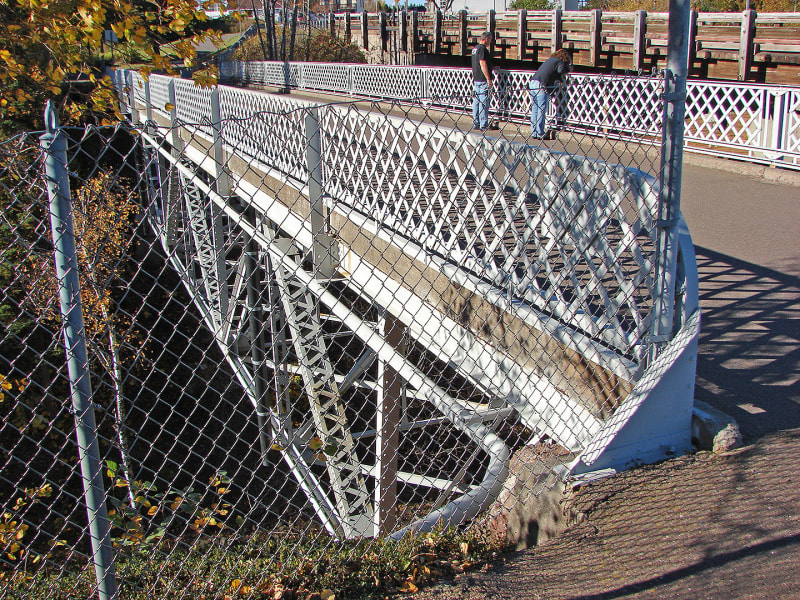
October 2010 (Sony DSC-H2)
Of course, when it comes to wooden bridges in America, the most common was what became known as 'Covered Bridges', the most famous being those from the book and the eventual movie 'The Bridges of Madison County'. The movie was filmed in Madison County Iowa, near the city of Winterset. While there's almost a dozen covered bridges still standing in the county, none of them allow motor vehicle traffic today, but all of them can be visited, if you're willing to do a lot of driving on dirt roads. The bridge below, known as the 'Roseman Covered Bridge', is one of the more famous ones, often seen on calendars and other published images:
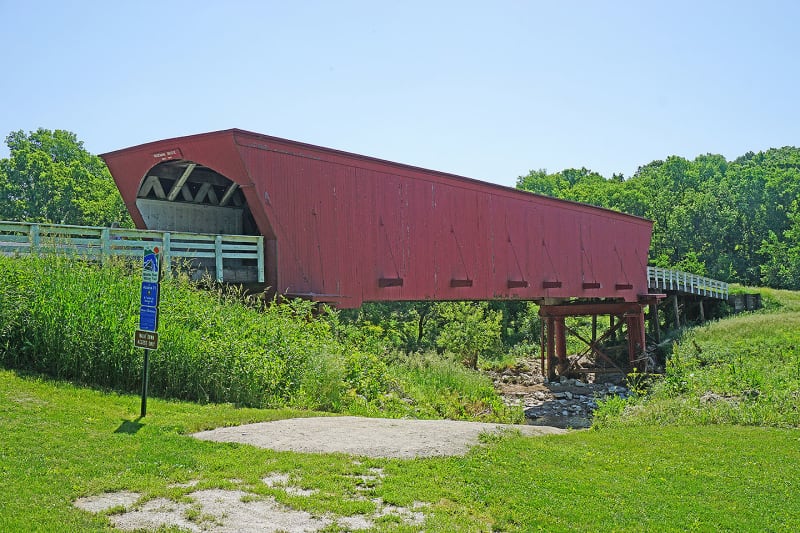
June 2019 (Sony a6000)
And here's a shot showing the actual structure of the bridge. Note that the reason why these bridges were covered was to protect the wood superstructure since most all of these bridges were constructed where there was was significant rainfall during the Summer as well as harsh winters with lots of wind and snow:
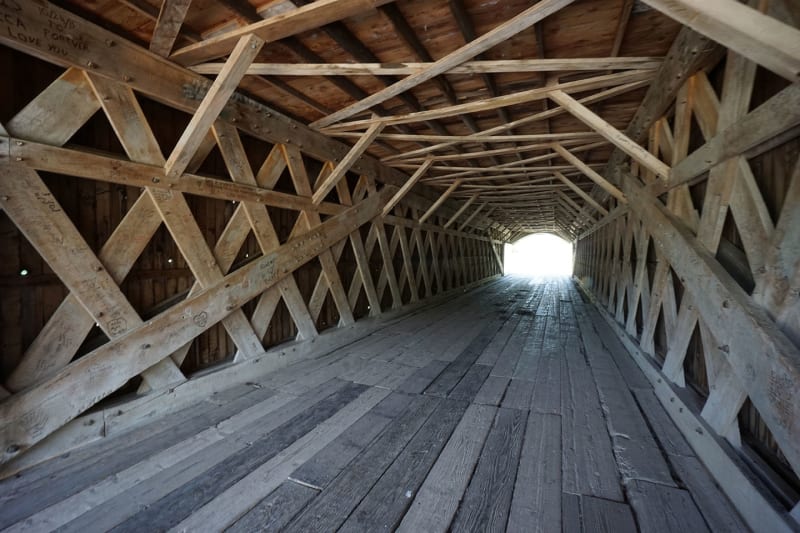
June 2019 (Sony a6000)
And as for a bit of trivia, Winterset, IA, is the birthplace of Marion Robert Morrison (AKA John Wayne). And of course, there's a museum there dedicated to him and his life:
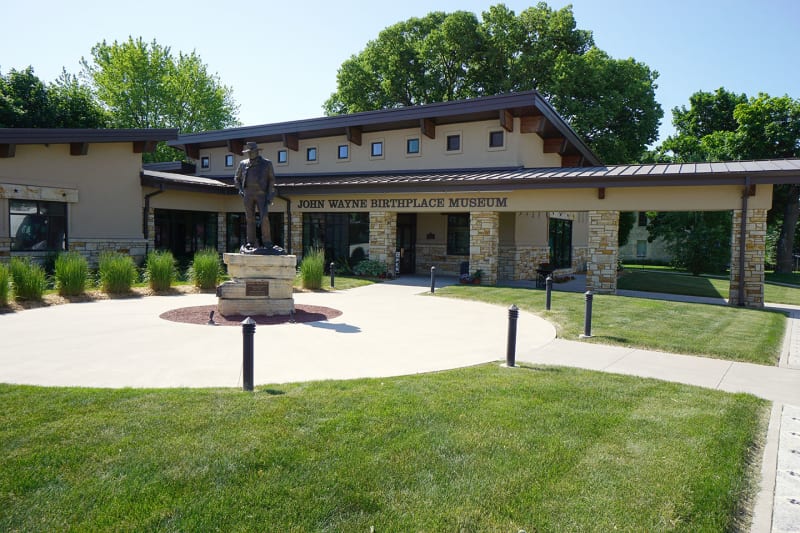
June 2019 (Sony a6000)
John R. Baker, P.E. (ret)
Irvine, CA
Siemens PLM:
UG/NX Museum:
The secret of life is not finding someone to live with
It's finding someone you can't live without

October 2010 (Sony DSC-H2)
This bridge was built in 1988 and it replaced an existing steel truss bridge which was constructed in 1915. Note that the old bridge was left in place and repurposed as a pedestrian and bicycle path bridge:

October 2010 (Sony DSC-H2)
Of course, when it comes to wooden bridges in America, the most common was what became known as 'Covered Bridges', the most famous being those from the book and the eventual movie 'The Bridges of Madison County'. The movie was filmed in Madison County Iowa, near the city of Winterset. While there's almost a dozen covered bridges still standing in the county, none of them allow motor vehicle traffic today, but all of them can be visited, if you're willing to do a lot of driving on dirt roads. The bridge below, known as the 'Roseman Covered Bridge', is one of the more famous ones, often seen on calendars and other published images:

June 2019 (Sony a6000)
And here's a shot showing the actual structure of the bridge. Note that the reason why these bridges were covered was to protect the wood superstructure since most all of these bridges were constructed where there was was significant rainfall during the Summer as well as harsh winters with lots of wind and snow:

June 2019 (Sony a6000)
And as for a bit of trivia, Winterset, IA, is the birthplace of Marion Robert Morrison (AKA John Wayne). And of course, there's a museum there dedicated to him and his life:

June 2019 (Sony a6000)
John R. Baker, P.E. (ret)
Irvine, CA
Siemens PLM:
UG/NX Museum:
The secret of life is not finding someone to live with
It's finding someone you can't live without
Wood is good, both in tension and compression. But connections are problematic, especially if intended to be moment connections. The concrete pedestrian bridge in Florida collapsed primarily because the difficulties of making moment connections in concrete were not realized or overcome by the designers. Knowing little about how this timber and steel bridge was analyzed, I only surmise that the connections may have been involved in the failure.
Retrograde
Structural
Sym P. le said:In this case, it's an obvious design flaw.
I do not think it is obvious at all. Care to elaborate?
One could argue that the bridge falling down demonstrated "an obvious design flaw". Unless that was one of the design parameters.
"Must fall down when used by a very heavy truck in approximately 10 years."
Check!
(Is there, like, a bonus payment when that happens?)
spsalso
"Must fall down when used by a very heavy truck in approximately 10 years."
Check!
(Is there, like, a bonus payment when that happens?)
spsalso
Retrograde
Structural
spsalso said:One could argue that the bridge falling down demonstrated "an obvious design flaw".
In no way could one argue that. The collapse could be due to any number of non-design related causes.
I am intrigued by the fact that the diagonals all face the same direction.
Does anyone recall another such bridge? There have been many thousands of truss bridges built over the years. One would think that someone else would have tried out this idea.
I do see that the designers are interested in cutting edge design. They show a photo of a bridge they designed (I presume) called the Flisa Bridge, built in 2003. I do know of an earlier bridge built in a similar vein: the Cuttingsville Bridge in Vermont, built in 1895. And it is still standing. So their Flisa Bridge shows some hope for survival.
spsalso
Does anyone recall another such bridge? There have been many thousands of truss bridges built over the years. One would think that someone else would have tried out this idea.
I do see that the designers are interested in cutting edge design. They show a photo of a bridge they designed (I presume) called the Flisa Bridge, built in 2003. I do know of an earlier bridge built in a similar vein: the Cuttingsville Bridge in Vermont, built in 1895. And it is still standing. So their Flisa Bridge shows some hope for survival.
spsalso
"In no way could one argue that. The collapse could be due to any number of non-design related causes."
Certainly. Sleazy contractors come to mind. Thoroughly dishonest government inspectors do, also. Crap material, of course. Totally incompetent structural engineers, also.
It's Norway, after all. What else could you expect?
spsalso
Certainly. Sleazy contractors come to mind. Thoroughly dishonest government inspectors do, also. Crap material, of course. Totally incompetent structural engineers, also.
It's Norway, after all. What else could you expect?
spsalso
Retrograde (Structural) 17 Aug 22 01:57 said:I do not think it is obvious at all. Care to elaborate?
If the truss is continuous, the steel vertical elements are all in tension and the glulam diagonals are all in compression. However, when the intermediate supports are considered, the force resolution becomes conflicted and the worst case scenario is in the frame east of the old pier. Looking at things simplistically, I doubt the connections are robust enough to counter the racking reaction that would occur. Typically, there would be a diagonal element landing on the support.
As can be seen in the photo below, that frame section has closed up and the west segment of the structure has been pulled east off the supports.
Though not proof to exclude all else, it is an area of concern.

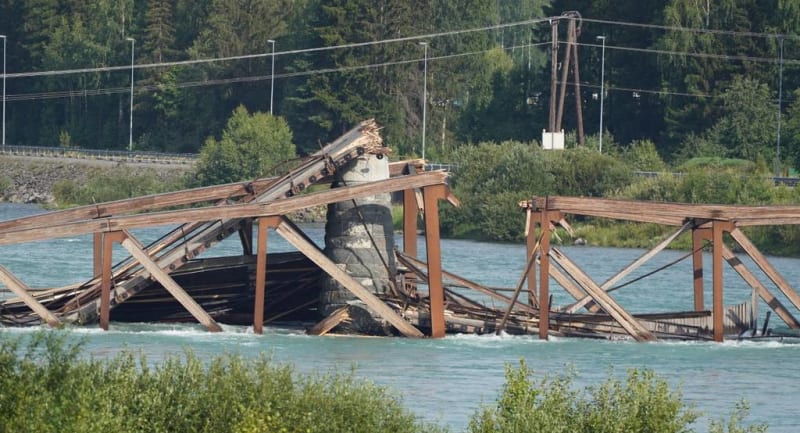
site:nrk.no - Bru har kollapset: – Dramatisk for sjåførene
spsalso,
Do you have a reason for casting aspersions on Norway?
There is no fundamental reason that the direction of the diagonals must be reversed. It is customary, but not mandatory.
SymP,
The truss was continuous. 3 spans, 4 supports. Your statement about all the verticals being in tension would be wrong regardless.
Do you have a reason for casting aspersions on Norway?
There is no fundamental reason that the direction of the diagonals must be reversed. It is customary, but not mandatory.
SymP,
The truss was continuous. 3 spans, 4 supports. Your statement about all the verticals being in tension would be wrong regardless.
Alistair_Heaton
Mechanical
I just really can't see Norway being corrupt on design process, inspection or certification.
You can also be assured that a comprehensive failure analysis will occur.
So we will find out what happened.
You can also be assured that a comprehensive failure analysis will occur.
So we will find out what happened.
It would be interesting to know the species of timber used in the laminated sections. Also, was there any treatment/protection of the exposed timber? There appears to be a metal top flashing, perhaps copper, on most of the truss members, but otherwise they are exposed.
- Status
- Not open for further replies.
Similar threads
- Replies
- 0
- Views
- 3K
- Replies
- 13
- Views
- 13K
- Replies
- 17
- Views
- 11K
- Replies
- 33
- Views
- 3K
- Replies
- 1
- Views
- 864
